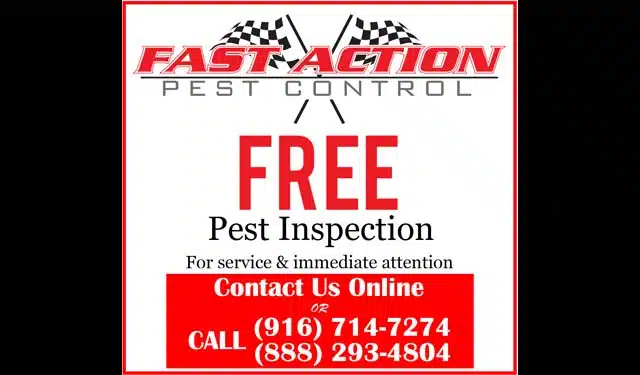6 Warning Signs of a Wasp Infestation in Your Home
Are you looking for ways to deal with a wasp infestation immediately? Here are the warning signs of a wasp infestation in your home.


Wasps are essential to the ecological system because they prey upon other pests. Wasps become a nuisance when they invade your home’s indoor and outdoor living areas.
A wasp infestation is nothing to mess around with. According to the CDC, between 2000-2017, there were 1,109 deaths from bee, hornet, or wasp stings. That is an average of 62 deaths per year.
Schedule a pest control service to conduct an inspection. Don’t risk getting attacked in you think you have an infestation. Here are some indicators that you may need professional help.
Types of Wasp Infestation
It may be shocking to learn there are 30,000 species of wasps. The good news is you may encounter only three types of wasp nests in northern California.
- Yellow jackets live near the ground, such as under porches and in hollow trees
- Paper wasps nest in enclosed locations, including eaves, attics, and wall gaps
- Mud daubers prefer areas with protection, including garages, attics, eaves, on the side of buildings
Wasps have a painful sting and will attack when defending their nest or if provoked. Because they do not leave their stinger behind, wasps can sting repeatedly.
Adding to that danger, a social wasp in distress emits a pheromone, sending a message to their colony. Colony members rush to its rescue, which can cause an attack of wasps in a stinging frenzy.
1. Swarming Insects
While there is no need to panic if you see a wasp from time to time, you may have a nest if you see them more frequently.
Wasps leave their nest several times a day to collect food. If you see wasps regularly, try following their flight path for a possible nest location. Be careful in your search because wasps will attack if they feel threatened.
If you suspect you have a nest in a hidden area, don’t attempt to investigate on your own. Inspecting wasp damage in a hidden location needs to be done by a professional.
2. Chewed Wood
Some species chew on wood to create pulp for building their nest. This process creates tunnels or holes on exterior surfaces. While it is easy to assume chewed wood is termites, mice, or other household pests, it might be wasps.
Wasps chew on logs, trees, sticks, wood fence posts, and wood homes. The amount of damage from wasps depends on the size of the nest. Until the wasp infestation receives proper treatment, they will continue chipping away the wood.
3. You Find a Nest
Wasps make their nests of mud or wood. The nests grow in size over time. Queen wasps build nests in the spring so they can begin laying eggs.
Things to look for when trying to see if you have a wasp nest:
- Nests may resemble a ball of paper
- A nest may be the size of a basketball with a hole in the bottom
- New nests have a hexagonal pattern
- Mud nests resemble a clay vase stuck to the wall
- Wasps exiting or entering a specific spot in the ground
You may only detect underground nests once you step on them. The wasps will likely swarm out and attack if you step onto their nest. Stay clear of the area if you see wasps coming out of or disappearing into the same spot on the ground.
Small nests repeatedly appearing around your home or yard are a good sign of an infestation. For instance, you find small nests when you lift the cover on your grill. They may have favorite spots where they continuously rebuild, such as under the eaves on your shed or along the columns of your porch.
If the nests keep returning, it is time to call a professional to eradicate the problem.
4. Wasps Appear Regularly Inside
It is always possible for an occasional wasp to come into your home through an open door or window. If you regularly find them inside, that is a good indication you may have a nest providing them with direct access to the home’s interior. The nest may be in an attic, crawl space, or wall.
Do not attempt to eliminate this type of nest on your own. The wasps will feel threatened and will likely attack. With the ability to sting repeatedly, you are putting yourself and others in the home at risk of severe injury or death.
Inspecting for wasp damage inside the home must be done by a professional to ensure personal safety and complete removal.
5. Buzzing Noise
When wasps build their nest, they make a tapping or buzzing sound. Even if you can’t see the wasps, they may be nearby if you hear this noise.
This is especially true if you hear the sound inside your home louder and more frequently the buzzing, the larger the swarm.
Maybe you don’t want to appear paranoid by calling pest control because you heard a bee noise inside or found 2-3 flying inside. Don’t worry, professional pest control services know how common and severe a wasp infestation is. They will do an inspection and answer your questions about treatment, the type of products they use, treatment guarantees, discounts, and more.
6. Wasp Attractions
If you find wasps around your home, you may have a wasp tourist attraction sign hanging outside. Check for these attention grabbers on your property:
Wood piles or other supplies of wood products are a draw for paper wasps. This species chews on the wood to create pulp for nest building.
Access to food attracts not only wasps but other pests as well. Ensure you aren’t setting out a buffet that tempts the wasp’s pallet.
Wasps like trash containing protein-rich debris. Make sure all garbage is in a sealed plastic or metal bin.
They return to a safe environment. If you’ve had a wasp infestation in the past, especially if the queen was able to shelter in your home during the winter months, they will return.
Wasps don’t reuse the same nest, so removing their prior living quarters doesn’t deter them. If they found a successful spot to build a nest last year, they will return to create a new residence on that same piece of real estate this year.
Prevent Wasp Infestation
Always perform routine maintenance to deter wasps from building their nests on your property. Seal any cracks and other possible entrance sites as quickly as possible.
Keep fly screens on all doors and windows to deter entrance. Make sure outside trash cans have tight-fitting lids to keep out worker wasps foraging for food.
You can create a temporary fix by setting wasp pots in your garden. This is a bottle you fill halfway with water and sugar. This substance attracts wasps, who enter, cannot escape, and drown.
Do-it-yourself fixes are only temporary and do not eliminate the source of the infestation. Only professional pest control services have the knowledge and skills for safely and effectively treating wasp infestations.
Get Fast Action Today
Don’t hesitate to call Fast Action Pest Control if you believe you have a wasp infestation. We have over 15 years of experience handling pest control problems in northern California.
Whatever your pest problem, call us at (916) 714-7274 or (888) 293-4804. You can also schedule your free inspection online. Don’t delay; contact us today!

